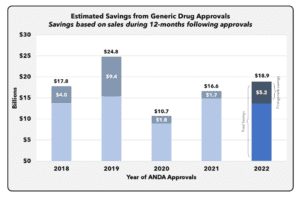What to do after a natural disaster: 9 steps for your business.

As a business owner, there are few experiences scarier than having your business or property damaged by a tornado or hurricane. Natural disasters can come out of nowhere and can cost you time, money, clients, and stress. But the more equipped you are to respond, the fewer losses you’ll incur.
Wondering what to do after a natural disaster? This step-by-step list will walk you through everything from assessing damage to securing repairs and getting back to work. As tornado and hurricane seasons begin, keep this list on hand and follow these nine steps should disaster strike.
Notify necessary contacts. If your building is damaged or operations are halted, you’ll need to contact key parties. This includes, but is not limited to, emergency services, utility companies, your insurance agent, clients or contractors you’re working with, employees, tenants, repair companies, and other outlets pertinent to your line of work. To save time and stress in the aftermath of a natural disaster, create this list before you need it. You may not be thinking as clearly in the wake of damage, so having this contact list ready ensures everyone who needs to know is in the know.
Evaluate damage and make plans. Do a full walkthrough of your space, but don’t go inside if there is damage to the physical structure as roofing may be unstable and hazards may be exposed. Once the property has been deemed safe to enter, assess the property, building, and key equipment that was impacted. Take photos and detailed notes of the damage and plan what will need to be fixed. Having photo evidence and notes to look back on will help during both repairs and claims filing.
Locate receipts and warranties. We urge businesses and homeowners to keep receipts for equipment and large-ticket technology. Locate these now and review the warranty information.
Schedule maintenance and repairs. Once additional hazards like downed lines or standing water are cleared, schedule repairs with reputable companies. Hire trained workers with proper personal protective equipment to clean up toxic chemicals, hazardous waste, or mold. Check the reviews for contractors before hiring them and get an estimate of their realistic timeline and pricing. Having this estimated completion date will help you start to plan your reopening.
Keep a close tab on costs. Again, retain receipts, invoices, and photos of repairs so your insurance agent can refer to them … and your business can, too. There will be a lot of money and contracts exchanged in the repair process. Keep them in one secure, centralized location.
Ensure future safety. Things like fire alarms, sprinklers, carbon monoxide detectors, or smoke detectors may have been damaged in the natural disaster. Get your safety back up and running with new devices. Conduct a full, professional inspection of gas and water lines as well.
Evaluate what worked and what didn’t. While you’re at it, assess what could have been done differently. For example, if you store critical documents on the floor or in containers that aren’t waterproof, consider relocating them off-site, in the cloud, or to higher ground. Learning from this event and making changes will set you up for safety and better prepare you in the future.
Communicate every step of the way. Your clients will have questions and your team will be eager to get back to work. That’s why it’s essential to communicate through every step. As timelines change, communicate these new dates. Share how you’re working to avoid disrupted service and make things right for clients in the chaos. Update your business listings on search engines and social media to reflect the disruption and when you’ll be back to business as usual. Those around you will be more understanding and accommodating the more transparent you are.
Talk to your agent. Your local, independent agent will be a key part of your recovery and protection in the future. At Frankenmuth Insurance, our hand-picked agents are part of your team. We’ll work with you to explain coverage, answer questions, file claims, and adjust your policy for more peace of mind moving forward.
Now that you know what to do after a natural disaster, take a step back. Think about how you can be proactive now to prevent similar damage in the future. Read our blog: Hurricane preparedness for business: 8 steps to protect your company and download our free Disaster Preparedness Guide.






